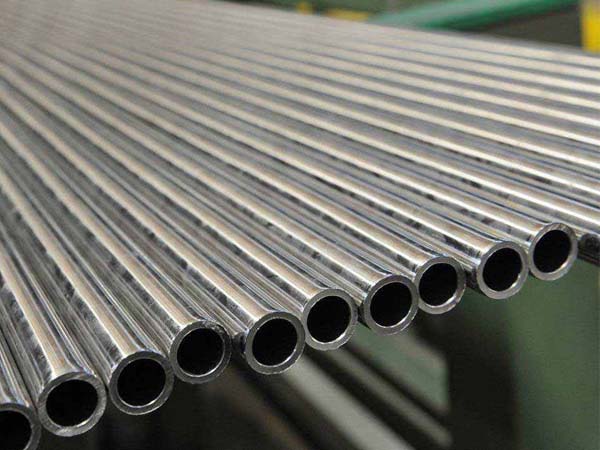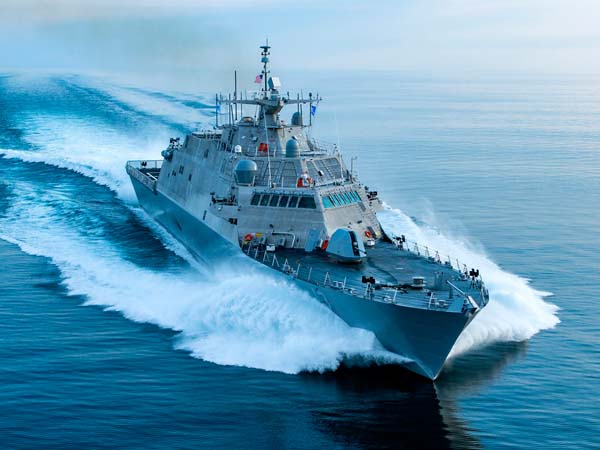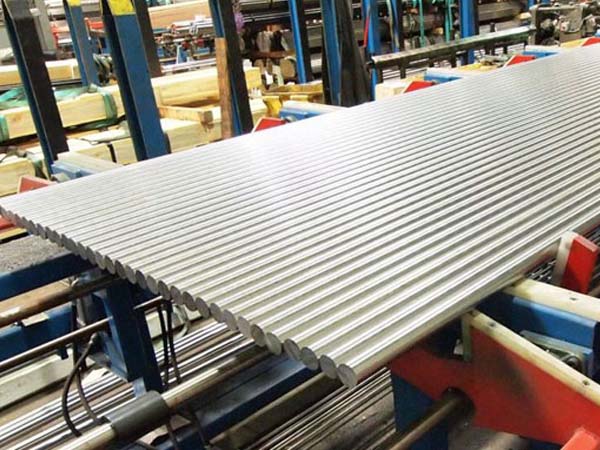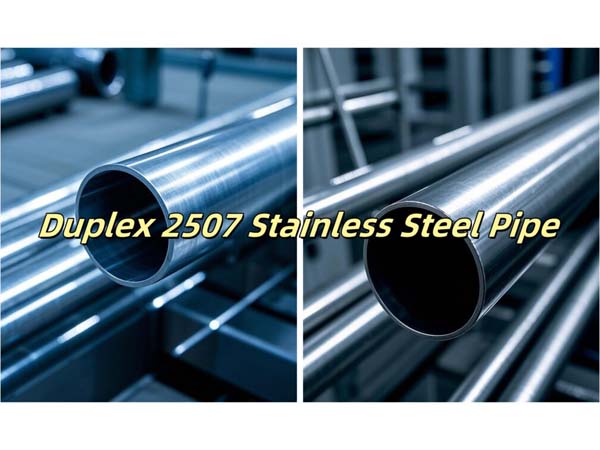





Phone
+86-731-82250427
Address
25th floor, C3 Building, Wanda Plaza, Kaifu District, Changsha, Hunan Province, China.
 Feb 12 2024
Feb 12 2024The differences in carbon, aluminum, and titanium content among the three alloys, UNS N08810 and UNS N08811, do not vary significantly. However, their mechanical properties and resistance to high-temperature corrosion make them highly valuable for applications requiring prolonged exposure to elevated temperatures and corrosive environments. In comparison to Incoloy 800, both Incoloy 800H and Incoloy 800HT exhibit significantly higher creep and rupture strength. While the carbon content in Incoloy 800 has no lower limit and a maximum of 0.10%, Incoloy 800H has a carbon content ranging from 0.05 to 0.10%, and Incoloy 800HT has a more restricted range of 0.06 to 0.10%. Additionally, Incoloy 800H and Incoloy 800HT undergo a high-temperature annealing treatment, resulting in a coarser grain size. This annealing treatment, along with the controlled chemical composition, contributes to the enhanced creep and rupture strength exhibited by these alloys.
In Hydrocarbon Processing: Catalyst tubing, convection tubing, pigtails, outlet manifolds, and quenching-system piping for steam/hydrocarbon reforming
In Ethylene Production: Convection and cracking tubes, pigtails
In Oxy-alcohol Production: Tubing in hydrogenation heaters
In Vinyl Chloride Monomer Production: Cracking tubes, return bends and inlet and outlet flanges
In Heat-treating Furnaces: Radiant tubes, muffles, retorts, and assorted furnace fixtures
In Power Generation: Steam superheating tubing
In Gas-cooled Nuclear Reactors: High temperature heat exchangers
|
Material |
Ni |
Cr |
Fe |
C |
Mn |
S |
Al |
Ti |
|
30.0-35.0 |
19.0-23.0 |
39.5 min |
0.05-0.10 |
1.50 max |
0.015 max |
0.15-0.60 |
0.15-0.60 |
|
|
N08811 |
30.0-35.0 |
19.0-23.0 |
39.5 min |
0.06-0.10 |
1.50 max |
0.015 max |
0.25-0.60 |
0.25-0.60 |
|
Material |
Tensile strength |
Yield strength 0,2 |
Elongation |
Hardness HB30 |
|
N08810 |
531N/mm² |
200N/mm² |
52% |
127HB |
|
531N/mm² |
200N/mm² |
52% |
127HB |
Incoloy 800, 800H, 800HT alloys have identical compositions of nickel, chromium, and iron, and they generally exhibit similar corrosion resistance. However, it is important to note that these alloys, specifically Alloy 800H and 800HT, are primarily utilized for their high-temperature strength. Consequently, the corrosive environments to which these alloys are exposed typically involve high-temperature reactions such as oxidation and carburization.
Similar to Incoloy 800, Incoloy 800H and 800HT are nickel-iron-chromium alloys renowned for their exceptional resistance to oxidation, carburization, and high-temperature corrosion. Heat treatment methods can be employed to optimize certain properties of the alloys, including grain size control and stress relief. The typical heat treatment procedures for Alloy 800H and 800HT include annealing, solution treatment, and stress relieving. It should be noted that the precise parameters for heat treatment may vary based on factors such as the form and condition of the alloy material, as well as the specific properties required for a given application.
Prior to heating, it is essential to thoroughly clean Incoloy 800H and 800HT from any oil, paint, grease, shop soil, or other foreign substances. During the heating process, all operations should be carried out in a low-sulfur atmosphere. If heating is conducted in an open-air environment, it is necessary to utilize low-sulfur fuel and maintain a reducing atmosphere in the furnace to prevent excessive oxidation.
Due to the susceptibility of chromium to oxidation by air, carbon dioxide, or water vapor, Incoloy 800H and 800HT cannot be subjected to bright annealing in standard industrial annealing furnaces. Instead, these alloys are typically annealed in box or muffle furnaces using prepared reducing atmospheres. Low-sulfur natural gas, burned with a limited amount of air, produces a thin, adherent, green-black oxide film on the material. These oxide films and scales can be removed through pickling. However, it is important to note that specialized pickling procedures are required due to the inherent resistance of Alloy 800H and 800HT to chemical attack.
The recommended temperature range for hot forming of Incoloy 800H and 800HT is 1600 to 2200°F (870–1200°C). Heavy forging should be conducted at temperatures as low as 1600°F (870°C), while light working can be performed down to 1600°F (870°C). It is advised to avoid any working between 1200 to 1600°F (650–870°C). However, these alloys are susceptible to carbide precipitation in the temperature range of 1000 to 1400°F (540–760°C), and rapid cooling through this range is recommended to prevent sensitization. Cooling after hot working should be done through air cooling or faster methods. It is important to note that heavy sections may become sensitized during cooling from the hot-working temperature, which can lead to intergranular corrosion in specific environments.
Incoloy 800H and 800HT are austenitic alloys with a face-centered cubic crystallographic structure. Due to their crystal structure, these alloys typically require more power for deformation. Therefore, proper temperature control during deformation is crucial for achieving hot malleability. Additionally, it is necessary to perform a significant amount of cold work before annealing for Alloy 800H and 800HT. The work-hardening rates for these alloys are somewhat lower compared to the common grades of austenitic stainless steels.
Incoloy 800H and Incoloy 800HT can be easily machined using standard methods. Turning operations, in particular, can achieve high metal removal rates, good tool life, and a desirable surface finish when employing coated carbide tools. High-speed-steel tools have also been found to yield satisfactory results, especially in applications involving interrupted cutting.
Similar to Incoloy 800, Incoloy 800H and 800HT exhibit excellent weldability. These alloys are commonly employed in applications that require high creep-rupture strength and should be joined using welding products that possess suitable strength characteristics for the intended service temperatures. The choice of the optimal welding product depends on the specific service temperatures involved and the desired properties of the welded joint.
For service temperatures up to 1450°F (790°C), INCO-WELD A Electrode is recommended for shielded-metal-arc welding, while INCONEL Filler Metal 82 is suitable for gas-shielded welding.
For service temperatures exceeding 1450°F (790°C), it is advised to use INCONEL Welding Electrode 117 and INCONEL Filler Metal 617. These products are recommended for achieving satisfactory welds in such high-temperature applications.
Ø Bar & Rod
Ø Plate & Sheet
Ø Coil & Strip
Ø Pipe & Tube
Ø Fitting: Flange, Tee, Elbow, Reducer etc.
Ø Forging: Ring, Shaft, Circle, Block etc.
Ronsco is a supplier with more than 27 years of experience in the special metal field, we always adheres to the business phiosophy of "customer-centered", tries its best to meet the requirements of customers and pursues win-win cooperation with customers. Are you looking for special metal products one-stop supplier! Contact Us Now! Email: marketing@ronsteel.com
